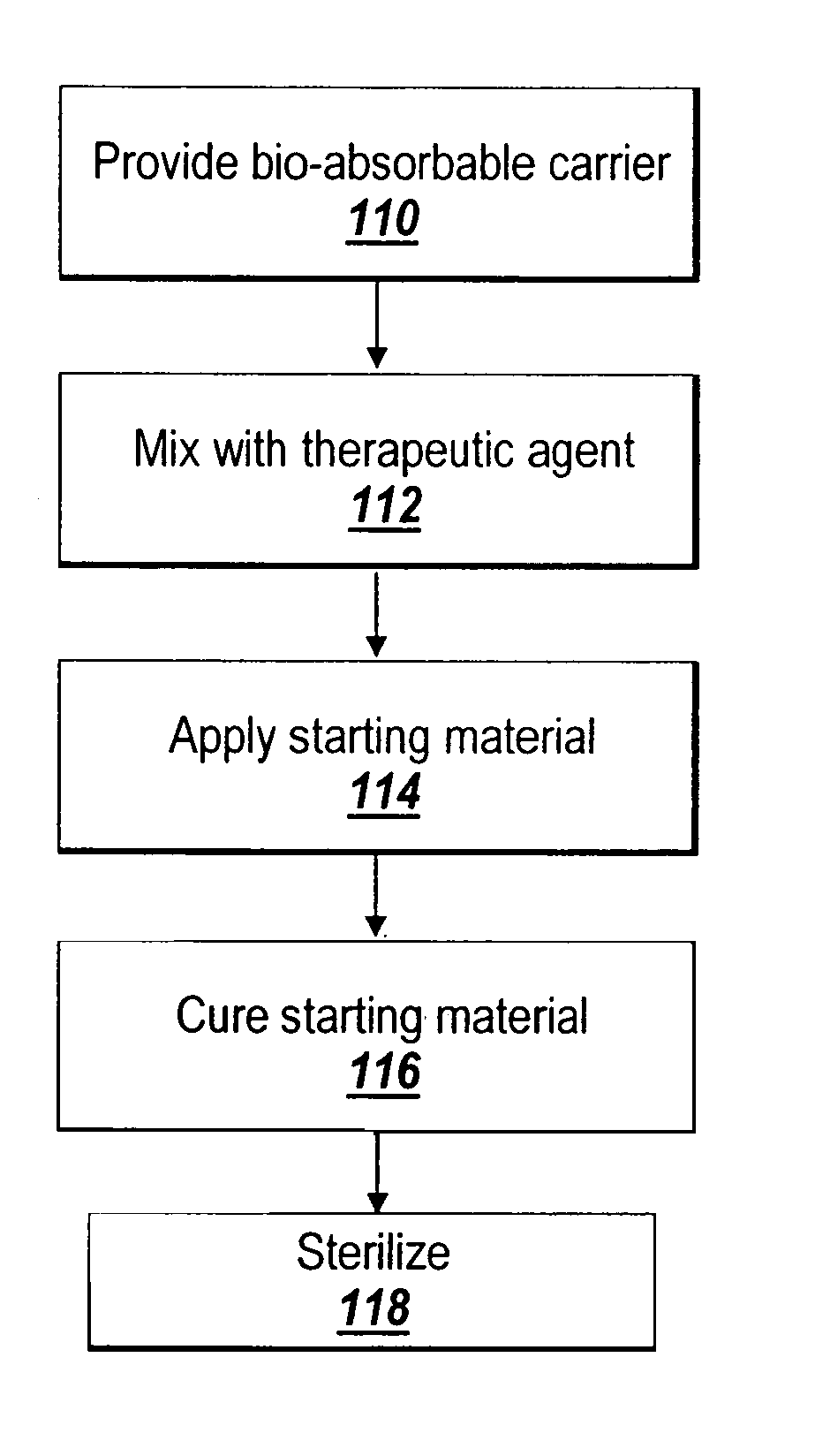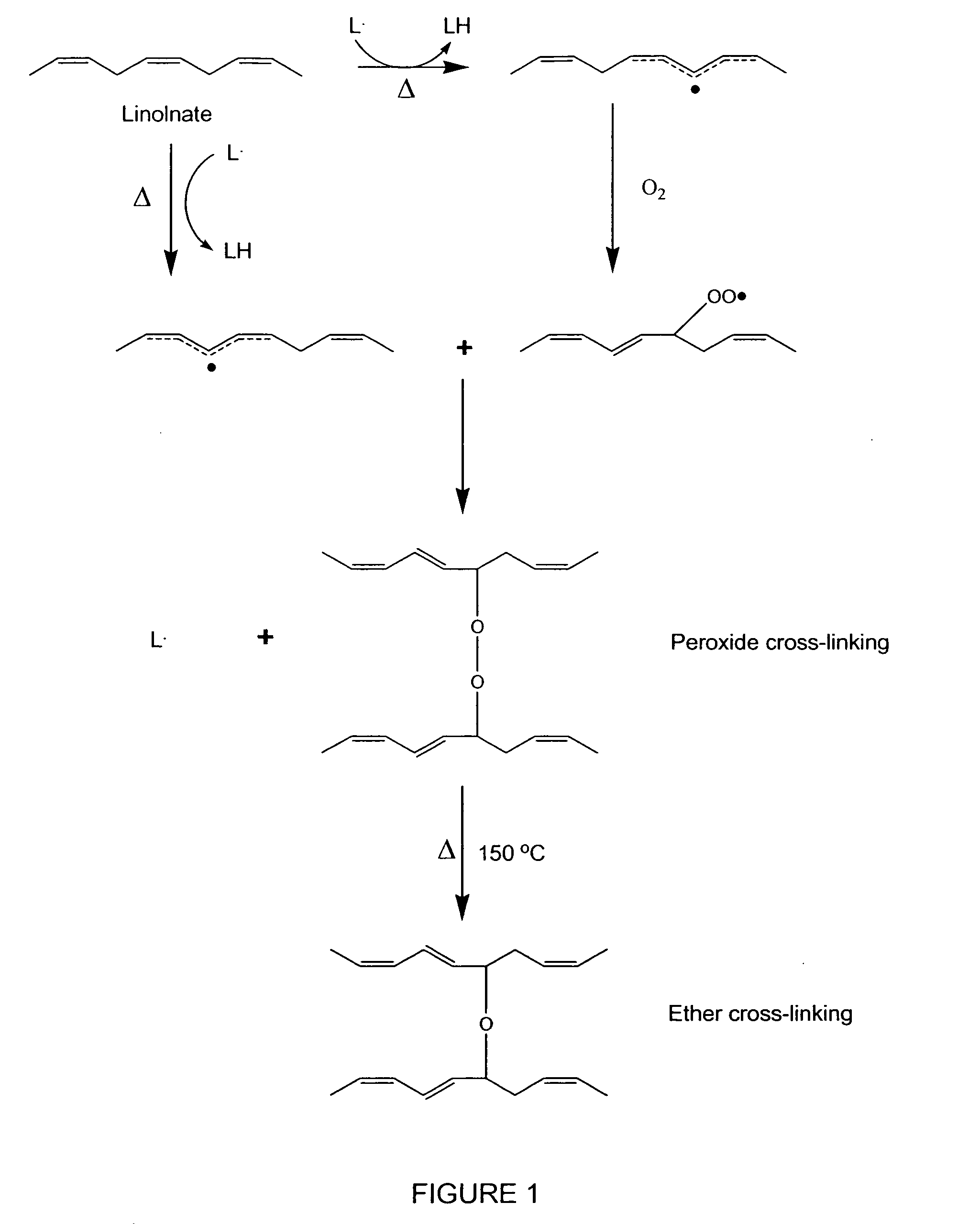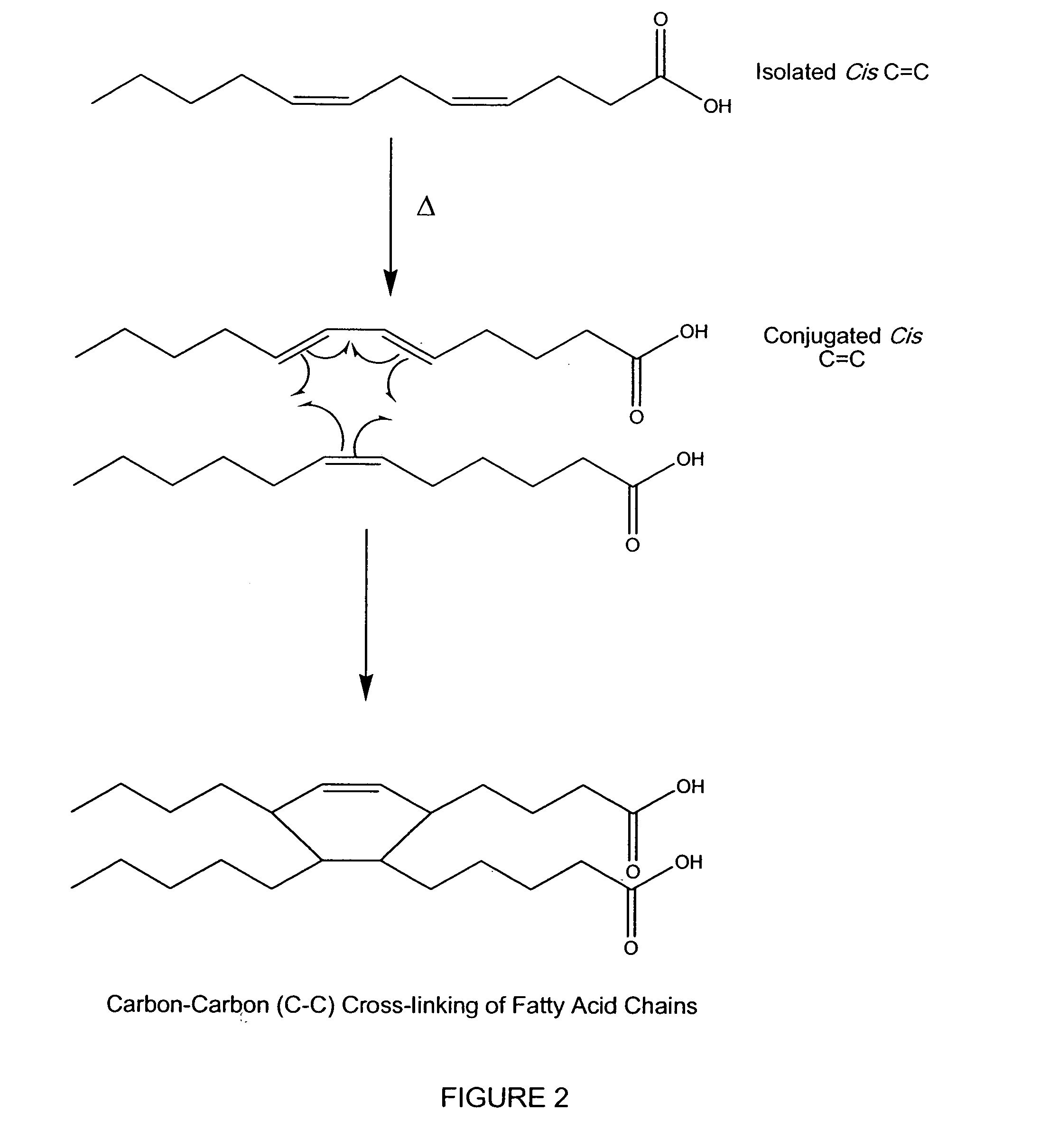Hydrophobic cross-linked gels for bioabsorbable drug carrier coatings
a cross-linked gel and bioabsorbable technology, applied in the direction of catheters, prostheses, extracellular fluid disorders, etc., can solve the problems of reducing membrane fluidity and cellular uptake, triglyceride cross-linking, etc., to improve the cross-linking and drug release properties of the coating, the effect of increasing the temperatur
- Summary
- Abstract
- Description
- Claims
- Application Information
AI Technical Summary
Benefits of technology
Problems solved by technology
Method used
Image
Examples
example 1
Characterization of a Coating
[0145] In Example 1, the coated medical devices were cured in a high airflow oven at a range of times and temperatures (standard conditions were 150° F. for 3 days and 200° F. for 24 hours), after which the fish oil was converted into a cross-linked gel coating encapsulating the polypropylene mesh by a lipid autoxidation mechanism using heat as a catalyst.
[0146] FTIR, DSC, liquid and solid state C13 NMR, X-ray diffraction, GC / MS, and LC / MS analysis were performed on the EPAX 3000 TG fish oil coatings cured at 200° F. for 24 hours.
[0147] FTIR Analysis: FIG. 8 is an FTIR analysis, which illustrates a comparison of the uncured fish oil (801) with the final cured coating. The FTIR shows that the coating contained hydroxyl (800), methylene (805), methyl (805), trans C═C (810), and anhydride / aliphatic peroxide / lactone bonds (815 and 830). A complex carbonyl band shape was obtained and determined to contain ester (820), ketone (825), aldehyde (825), and fatt...
example 1 summary
[0172] Based on the information provided from laboratory experiments, analytical data, and literature research a theoretical structure of the cured fish oil coating was derived, as schematically presented in FIG. 14. Without being bound by a particular theory, the composition of the uncured coating (1305) is thought to be a mixture of saturated and polysaturated (i.e., cis) fatty acid triglycerides. The partially cured coating (1410) is thought to be composed of a flexible gel containing short chain byproducts (i.e., fatty acids, ketones, aldehydes), less polyunsaturated fatty acids, (mostly trans C═C bonds), and cross-linking of fatty acid chains (mostly peroxide, ether and C—C). The cured coating (1420) is believed to comprise short chain byproducts (i.e., fatty acids, ketones, aldehydes, and partially reacted fish oil, 1430), mostly saturated fatty acids, with some monounsaturated fatty acids (all trans C═C), and a network of cross-linked fatty acids and glycerides (1425) compris...
example 2
Tailoring Drug Release Profile of Coating: Curing Conditions
[0173] An advantage of the cured fish oil coating in various embodiments of the present inventions is that the curing conditions utilized (i.e., cure time and temperature) can directly influence the amount of coating cross-linking density and byproduct formation, which in turn effects the rate of coating conversion to free fatty acids, fatty alcohols, and glycerol. The effects of various curing conditions on fish oil curing chemistry and drug release properties are demonstrated in this Example.
[0174] The Effects of Time and Temperature on the Release of Therapeutics
[0175] Drug delivery experiments were performed using coatings cured at 200° F. for 24 hours or at 150° F. for 3 days. All samples were 1×1″ and dissolution was performed in 0.01 M PBS solution. All drug samples were loaded as an cured mesh coating created by mixing the liquid fish oil and drug together, with or without solvent, followed by coating a piece of ...
PUM
| Property | Measurement | Unit |
|---|---|---|
| temperature | aaaaa | aaaaa |
| temperatures | aaaaa | aaaaa |
| temperatures | aaaaa | aaaaa |
Abstract
Description
Claims
Application Information
 Login to View More
Login to View More - R&D
- Intellectual Property
- Life Sciences
- Materials
- Tech Scout
- Unparalleled Data Quality
- Higher Quality Content
- 60% Fewer Hallucinations
Browse by: Latest US Patents, China's latest patents, Technical Efficacy Thesaurus, Application Domain, Technology Topic, Popular Technical Reports.
© 2025 PatSnap. All rights reserved.Legal|Privacy policy|Modern Slavery Act Transparency Statement|Sitemap|About US| Contact US: help@patsnap.com



